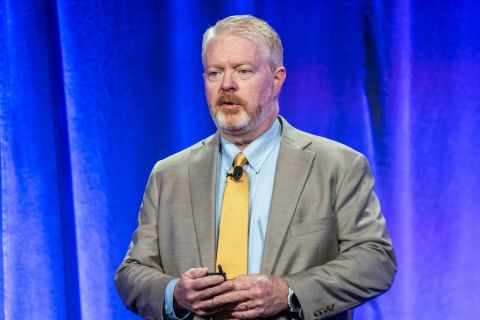
Imperial Oil signaled it will remain selective in exploring M&A in 2023 as it looks to maximize returns in its existing portfolio. (Source: Shutterstock)
Canada’s integrated Imperial Oil reported record fourth-quarter 2022 operating and financial performance in its Jan. 31 earnings report, but management signaled it will remain selective in exploring M&A in 2023 as it looks to maximize returns in its existing portfolio.
Despite volatile market trends due to COVID and global economic and geopolitical uncertainty, Imperial saw strong financial results due to higher demand for petroleum and volatile commodity and product prices, Imperial said in its fourth-quarter earnings webcast.
For the fourth quarter, the E&P reported CA$1.72 billion net income and cash flow from operating activities of CA$2.79 billion fourth quarter. The company said it returned a record CA$7 billion in 2022 to shareholders, including CA$2.1 billion to shareholders in the fourth quarter. The company also declared a first-quarter 2023 divided of CA$0.44 per share.
Upstream production operations at Kearl, Cold Lake and Syncrude produced record production levels at a gross total of 441,000 boe/d in the fourth quarter and 416,000 boe/d for the full year. Despite cold weather impacts in early 2022, Kearl’s second half production was the highest in the asset’s history, with fourth-quarter gross production at 284,000 bbl/d. Cold Lake’s full-year production was the highest since 2018 at 144,000 bbl/d. Syncrude also saw its highest annual production at 77,000 bbl/d.
Production bounced back despite interruptions due to cold weather events because of the development of improved cold winter practices, including equipment monitoring and contingency plans, and the company plans to continue updating these practices in 2023.
“Despite those weather challenges across our assets…we haven't experienced the downtime that others have,” said Brad Corson, chairman, president and CEO of Imperial. “We continue to find ourself in a very strong margin environment…High reliability coupled with those high margins will allow us to generate significant value.”
“As others experience downtime, that sometimes opens up opportunities for us to, on a one-off basis, supply some [competitors’] customers in the market,” he continued. “It generates an opportunity for us to even increase our product sales beyond our normal levels.”
The company’s outlook on M&A has not changed, said Corson. It is “centered around keeping the aperture open, looking for opportunities that are strategic and accretive for our portfolio. Part of that determination is not just what's available in the market, but also looking at our existing inventory of our own opportunities.”
“We're going to continue to evaluate how we best maximize value for our shareholders,” he said. “Is it through acquisitions? Is it through continuing to advance our own deep pipeline of opportunities? That assessment may change over time depending on what's available in the market and to what degree is consolidation occurring or incentivized.”
With Imperial’s three refineries setting records in 2022, the company continues to see strength in the diesel business and plans to continue its optimization in the coming year.
“Our assets… can shift between diesel and jet and motor gasoline at the margins and allows us to maximize value,” said Corson.
Imperial also outlined the company’s progress in sustainability as part of the Pathways Alliance Initiative, including its final investment decision to invest in Canada’s Strathcona refinery for renewable diesel manufacturing. The company announced a new goal for its operated assets of achieving corporate-wide net zero for its Scope 1 and 2 emissions by 2050.
RELATED
Imperial Moves on CA$720 Million Investment in Renewable Diesel Facility
The Pathways Alliance has entered into an agreement with the Alberta provincial government to evaluate carbon sequestration and is now working on feasibility studies, environmental assessments and early engineering development in an effort for Canada to lower its carbon footprint. The proposed geological storage hub would be one of the world’s largest carbon capture and storage projects.
“Imperial’s renewable projects – even if driven by regulatory compliance – does not mean they are not competitive or have a low rate of return,” said Jon Wetmore, vice president, downstream.
Recommended Reading
How Diversified Already Surpassed its 2030 Emissions Goals
2024-04-12 - Through Diversified Energy’s “aggressive” voluntary leak detection and repair program, the company has already hit its 2030 emission goal and is en route to 2040 targets, the company says.
BKV CEO Chris Kalnin says ‘Forgotten’ Barnett Ripe for Refracs
2024-04-02 - The Barnett Shale is “ripe for fracs” and offers opportunities to boost natural gas production to historic levels, BKV Corp. CEO and Founder Chris Kalnin said at the DUG GAS+ Conference and Expo.


